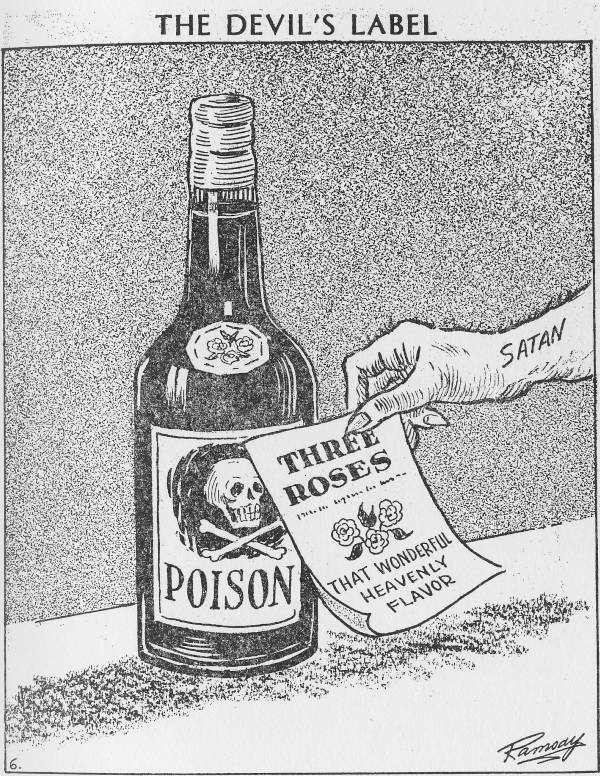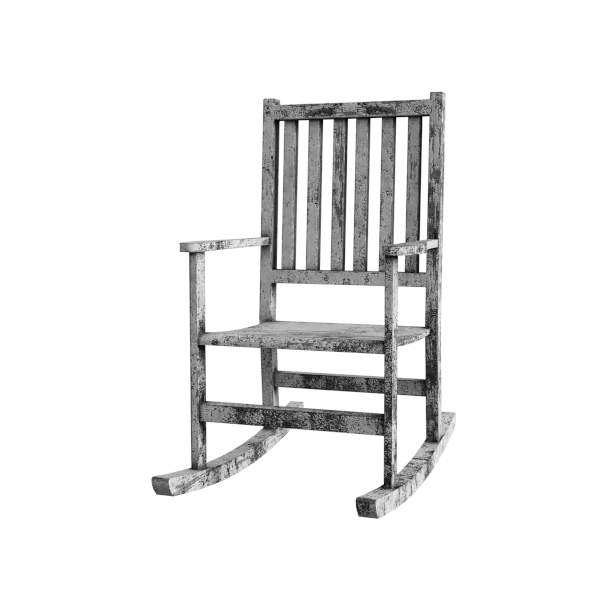The Drinking House

Should a Christian Drink?
Wine is a mocker, strong drink is raging: and whosoever is deceived thereby is not wise.
Proverbs 20:1
Who hath woe? who hath sorrow? who hath contentions? who hath babbling? who hath wounds without cause? who hath redness of eyes? They that tarry long at the wine; they that go to seek mixed wine. Look not thou upon the wine when it is red, when it giveth his colour in the cup, when it moveth itself aright. At the last it biteth like a serpent, and stingeth like an adder. Thine eyes shall behold strange women, and thine heart shall utter perverse things. Yea, thou shalt be as he that lieth down in the midst of the sea, or as he that lieth upon the top of a mast. They have stricken me, shalt thou say, and I was not sick; they have beaten me, and I felt it not: when shall I awake? I will seek it yet again.
Proverbs 23:29-35
The Drinking House
The room was so cold and cheerless and bare,
With its rickety table and one broken chair,
With its curtainless window with hardly a pane
To keep out the snow, the wind and the rain.
A cradle stood empty, pushed up to the wall,
And somehow that seemed the saddest of all.
In the rusty old stove the fire was dead,
There was snow on the floor at the foot of the bed
And there, all alone, a pale woman was lying,
You need not look twice to see she was dying.
Dying of want, of hunger and cold.
Shall I tell you her story – the story she told:
“No Ma’am, I’m no better; my cough is so bad;
It’s wearing me out, tho’, and that makes me glad,
For it’s wearisome living when one’s all alone,
And Heaven they tell me, is just like a home.
Yes, Ma’am, I’ve a husband, he’s somewhere about,
I hoped he’d come in ‘fore the fire went out;
But I guess he has gone where he’s likely to stay,
I mean to the Drinking House over the way.
It was not always so, and I hope you won’t think
Too hard of him, lady, it’s only the drink.
I know he’s kindhearted for oh! how he cried
For our poor little baby the morning he died.
You see he took sudden, and grew very bad,
And we had no doctor – my poor little lad –
For his father had gone, never meaning to stay
I am sure, to the Drinking Hose over the way.
And when he came back, ‘twas far in the night,
And I was so tired and sick with fright,
Of staying so long with my baby alone,
And it cutting my heart with its pitiful moan.
He was cross with the drink; poor fellow, I know
It was that, not his baby, that bothered him so;
But he swore at the child, as panting it lay,
And went back to the Drinking House over the way.
Could I be a girl, I, the heart-broken wife
There watching alone while the dear little life
Was going so fast that I had to bend low
To hear if it breathed, ‘twas so faint and so slow.
Yes, it was easy, his dying, he just grew more white
And his eyes opened wider to look for the light,
As his father came in ‘twas just break of day –
Came in from the Drinking House over the way.
Yes, Ma’am, he was sober, at least mostly I think,
He often stayed that way to wear off the drink.
And I know he was sorry for what he had done,
For he set a great store by our first little one,
And straight did he come to the cradle-bed, where
Our baby lay dead, so pretty and fair.
I wondered that I could have wished him to stay
When there was a Drinking House over the way.
He stood quiet a while, did not understand,
You see, till he touched the cold little hand.
Oh! then came the tears, and he shook like a leaf,
And he said ‘twas the drinking that made all the grief.
The neighbors were kind and the minister came,
And he talked of my seeing my baby again,
And of the bright angels – I wondered if they
Could see in the Drinking House over the way.
And I thought when my baby was put in the ground,
And the men with their spades were shaping the mound,
If somebody only would help me to save
My husband who stood by the side of the grave.
If only it were not so handy to drink –
The men that make laws, Ma’am, sure didn’t think,
Of hearts they would break, of the souls they would slay,
When they licensed the Drinking House over the way.
I’ve been sick since, and it cannot be long,
Be pitiful, lady, to him when I’m gone.
He wants to do right, but you never can think
How weak a man grows when he’s fond of drink.
And it’s tempting him here and it’s tempting him there –
Four places I’ve counted in this very square,
Where a man can get whiskey by night and by day,
Not to mention the Drinking House over the way.
There’s a verse in the Bible the minister read,
No drunkard shall enter the kingdom, it said.
And he is my husband and I love him so,
And where I am going I want him to go.
Our baby and I will both want him there –
Don’t you think the dear Savior will answer our prayer?
And please, when I’m gone, ask someone to pray
For him at the Drinking House over the way.
Author Unknown
Before You take that Christmas Drink
Anne (Story posted 1996)
Two years ago, her 17-year-old son Wesley went out for a drive with a friend five days before Christmas. As they drove down the street a car driven by a drunk driver slammed into them.
“It was all over within 60 seconds of the time he left the house,” she said, crying.
Wesley died 15 days later. The driver who killed him was convicted of drunken driving and vehicular manslaughter, and sentenced to one and a half to three years in jail.
“The last thing that I did with my two sons together was we bought a Christmas tree, and we put it up. (When) I came home from the intensive care unit on Christmas night, I threw all the ornaments off and threw the tree away. And that was the last we’ve ever had Christmas.
“Liquor is responsible for 19% of the divorces, 25% of the poverty, 25% of the insanity, 37% of the pauperism, 45% of child desertion, and 50% of the crime in this country,” the League determined. “And this,” it concluded , ” is a very conservative estimate” (Odegard, 1928: 60).
Who Killed the Princess? ALCOHOL, THAT’S WHO!
PARIS (CNN) — The driver of the Mercedes in which Princess Diana died on Sunday had a level of alcohol above the legal limit in his blood, the Paris prosecutor’s office said on Monday.
UPDATE 08/09/2021
A newly wed woman going to her home after being married was killed by Gonazlez and his friend Booze.
Officers said Gonzalez-Rea had a clear odor of alcohol on his breath and told police he had three beers before the crash, FOX13 Salt Lake City reported. Results of a breathalyzer test came back positive for alcohol, the station reported, citing court documents.
The Sheriff’s Office also suspects speed and intoxication were factors in the accident, though authorities are awaiting a toxicology report from the Office of the Medical Investigator before making any official determination.
Court records indicate that Harris had a history of drinking and driving. In June 2017, she was arrested and charged with driving while intoxicated after records indicated she had a blood alcohol content level of over 0.15, nearly twice the legal limit. Harris was convicted in October 2017 and was ordered to have an ignition interlock device installed in her car.
Source Fox News
Alcohol, a “legal drug,” is already abused by people in almost every age and socio-economic group. According to the 2001 National Household Survey on Drug Abuse, approximately 10.1 million young people aged 12-20 reported past month alcohol use (28.5 percent of this age group). Of these, nearly 6.8 million (19 percent) were binge drinkers. Source (CDC)
The Purveyors of this poison have profited from the broken homes, the addicted, and the misery of the drunkard. They make slick ads showing a happy, successful life when just the opposite is true.
More than 140,000 people die from excessive alcohol use in the U.S. each year. That is over 3 times death by a gun!
Excessive alcohol use was responsible for more than 140,000 deaths in the United States each year during 2015–2019, or more than 380 deaths per day.
Compare this to death by a gun.
In 2020, the most recent year for which complete data is available, 45,222 people died from gun-related injuries in the U.S., according to the CDC. That figure includes gun murders and gun suicides, along with three other, less common types of gun-related deaths tracked by the CDC: those that were unintentional, those that involved law enforcement and those whose circumstances could not be determined.
pewresearch.com
No amount of alcohol is good for your overall health, global study says
By Sandee LaMotte, CNN
If you’re one of the third of all humankind who drinks alcohol, take note: There’s no amount of liquor, wine or beer that is safe for your overall health, according to a new analysis of 2016 global alcohol consumption and disease risk.
Alcohol was the leading risk factor for disease and premature death in men and women between the ages of 15 and 49 worldwide in 2016, accounting for nearly one in 10 deaths, according to the study, published Thursday in the journal The Lancet.
For all ages, alcohol was associated with 2.8 million deaths that year.
Written October 21, 2006
According to the U.S. Centers for Disease Control and Prevention, approximately 20,000 Americans die every year as the direct result of alcohol consumption.
the U.S. Department of Justice has reported the following about crime in the United States: “Two-thirds of victims who suffered violence by an intimate (a current or former spouse, boyfriend or girlfriend) reported that alcohol had been a factor.
Drinking by college students, ages 18 to 24, contributes to an estimated 1,400 student deaths, 500,000 injuries and 70,000 cases of sexual assaults or date rapes each year, according to a 2002 study commissioned by the National Institute on Alcohol Abuse and Alcoholism Task Force on College Drinking.
Harvard School of Public Health College found that nearly three-quarters (72 percent) of all college female rape victims experienced rape while under the influence of alcohol.
People who begin drinking by age 15 are five times more likely to abuse or become dependent on alcohol than those who begin drinking after age 20, according to the National Clearinghouse for Alcohol and Drug Information.
Alcoholic Psychoses. There was a notable decrease in alcoholic psychoses and in deaths due to alcoholism immediately preceding the enactment of Prohibition and a gradual increase in alcoholic psychosis and in deaths from alcoholism in the general population since 1920. “These facts appear to indicate that since 1920, Prohibition [was] increasingly impotent as a means of preventing excessive use of alcohol to an extent productive of serious mental disorders and untimely death. 1920 marks the end of the decline and the beginning of the rise in the trends of alcoholic mental diseases and of deaths from alcoholism in the general population” (Brown, 1932: 88).
The highest death rates from alcoholism occurred during the decade prior to Prohibition as did the highest death rates from cirrhosis of the liver. These statistics should be qualified by the observations of Dr. Charles Morris, Chief Medical Examiner for New York City: “In making out death certificates (which are basic to Census Reports) private or family physicians commonly avoid entry of alcoholism as a cause of death whenever possible. This practice was more prevalent under the National Dry Law than it was in preprohibition time” (Tillitt, 1932: 114-115)
“Nearly all alcoholics, recovered or otherwise, are heavy smokers,” says Arthur Cain, M.D., The Cigarette Habit: An Easy Cure (1964)
You only need to look at Prohibition to see that criminalizing an activity suppresses it, and legalization increases it. During Prohibition, alcohol consumption fell almost 60 percent and related liver cirrhosis and deaths fell dramatically.
According to the National Highway Transportation Safety Administration, approximately three out of every ten Americans will be involved in an alcohol-related crash at some time in their lives.
First taste
Mick: I was seven years old. My dad was always drinking Miller High Life in the Garage while working on the truck. I’d stand around and watch, trying to help. I came to appreciate it whenever he prefaced something with: “Now, don’t tell your mother, but…”
Matt: I was also seven or eight years old when my old man turned me on to beer in much the same manner. I didn’t tell. I kept my mouth shut and the beer flowing.
Rodg: Believe it or not, I didn’t discover booze until I was 23 years old. A late bloomer. I had a Guinness one day and it was just about the best thing I ever tasted. I became an instant beer fanatic
Drunkest ever
Matt: I was living in Oregon. Almost 21 but not quite. I convinced a friend who was 21 to pick me up a fifth of Seagram’s 7 and a twelver of Milwaukee’s Best Ice. I was doing my Chris Farley bit and I took out his parent’s living room coffee table. I lived a block away but didn’t dare try to make it home. I became overwhelmed with remorse when his parents showed up, so I hid in his room with the bottle until it was gone
The Harvard School of Public Health College Alcohol Study
WHO BINGES?
• 44% of U.S. college students engaged in binge drinking during the two weeks before the survey.
• 51% of the MEN drank 5 or more drinks in a row
• 40% of the WOMEN drank 4 or more drinks in a row
• Students more likely to binge drink are white, age 23 or younger, and are residents of a fraternity or sorority. If they were binge drinkers in high school, they were three times more likely to binge in college.
• The percentage of students who were binge drinkers was nearly uniform from freshman to senior year, even though students under 21 are prohibited from purchasing alcohol.
• Over half the binge drinkers, almost one in four students, were frequent binge drinkers, that is, they binged three or more times in a two-week period. While one in five students reported abstaining from drinking alcohol.
“I remember a few years ago I arrived at this party and everyone was off their faces by about 8pm. They’d been doing Tequila shots for about fifteen minutes, and had gone through a couple of bottles. They spent the entire night being sick – all over themselves, the carpet, and everyone else. Great party, hey? Spent the whole night trying to stop them from choking on their own vomit.” Bill, 22.
I remember at a party a few months ago, as soon as I got there my friend announces to me that she’s going to get completely trashed. It was only after she’d drunk the bottles of champagne, smoked the cigars, yelled abuse at all of her friends, hit about five people, including someone she had never met, and tried to slit her wrists, that she realized she was taking antibiotics that said “Do not mix with alcohol.” Tim, 20
Did you know?
Yeast is the star of the drinks industry. If it feeds on sugar in the absence of oxygen, it releases carbon dioxide and ethanol – the drinkable form of alcohol
Only 20% of the alcohol you swallow is absorbed by the stomach
Heavy drinking is blamed for up to 33,000 deaths a year in the UK
When you consume alcohol, you lose more water in your urine than you take in the drink itself
Booze interferes with the nerve endings that control erections
Binge drinking is thought to have serious long-term health impacts
After a heavy night out drinking your body is dehydrated which causes your brain to shrink away from the skull
Alcohol is estimated to be a factor in 20-30% of accidents worldwide Long-term alcoholics often suffer from alcoholic myopathy, a muscle-wasting condition that causes extreme tiredness after physical activity Long-term alcoholics also lose bone mass as alcohol affects the way calcium is processed by the body.
Over 90% of all alcohol consumed moves from the blood to the liver where it’s metabolised.
DATA POINTS: Alcohol and traffic deaths
Between 1982 and 1993, 266,291 deaths in the United States were alcohol-related — one fatality every 30 minutes.
More than 300,000 people were injured in crashes where police reported that alcohol was present — an average of one person injured approximately every two minutes.
In 1995, 32 percent of all fatal crashes during the week were alcohol-related, compared to 54 percent on weekends. For all crashes, the alcohol involvement rate was 5 percent during the week and 11 percent during the weekend.
In 1995, 32.5 percent of all fatal traffic accidents involved drivers with a blood-alcohol content of greater than .10.
The number of U.S. traffic fatalities hit a 13-year high in 2003; with a total of 43,220 deaths on U.S. highways and 40 percent of those were alcohol-related, according to preliminary National Highway Traffic Safety Administration figures.

